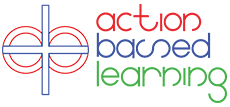
By: Andrea Gordon Feature Writer, Published on Wed Feb 24 2016
Kids who jump, squat and move their bodies during math and spelling may learn more effectively than students in typical sedentary classrooms, a new study suggests.
The research, involving 500 Grade 2 and 3 children in the Netherlands, found those who learned in physically active classes tested better academically than kids who sat at their desks.
The findings were published Wednesday in the journal Pediatrics, and provide new evidence that getting children moving isn’t just good for health, but may also boost brain power.
“It’s really a significant outcome,” said Marijke Mullender-Wijnsma, lead author and researcher in the centre for movement sciences at the University of Groningen in the Netherlands.
“Children want to move, and they learn a lot by moving their bodies,” Mullender-Wijnsma said in an interview. “Children can also learn by sitting at a table, but they learn more by being active.”
During the two-year study, half the 7- and 8-year-olds were taught active lessons in math and language three times a week for 30 minutes over the course of 22 weeks each year. The control group learned in regular classrooms.
The lessons using moderate to vigorous physical activity were aimed at tasks involving repetition and memory, such as math calculations and spelling. The students’ academic levels were measured before the intervention, and several times throughout.
The kids learned using a range of movements including jumping, taking large and small steps, squatting and air punches as they recited answers to questions. For example, while spelling aloud the word “dog,” they might jump three times — once for each letter. Or to solve 2x4, they might squat eight times while counting.
After two years, those in the active group showed greater gains in math speed, general math ability and spelling — equal to being four months ahead of the control group, the researchers found. No differences were found in reading. But the researchers called it “a promising new way of teaching.”
Mounting concern over childhood inactivity and obesity in Canada has led to programs and policies aimed at getting schoolkids moving. The Netherlands study is important because it highlights another key piece — the role of exercise in learning.
Mullender-Wijnsma says more is needed to understand the mechanisms of how exercise affects the brain. But earlier neuroscience research suggests the young students may have benefitted in several ways.
Children use sensory and motor activity to learn, she says, which is enhanced through physical activity. Exercise has also been found to improve attention and the ability to remain on task.
Over time, it may also trigger the development of new cells and blood vessels that lead to improved cognitive performance, she said.
Pioneering neuroscientists like psychiatrist Dr. John Ratey of Harvard Medical School have built a body of evidence showing how aerobic activity boosts kids’ productivity, attention and memory.
“There’s a lot of anecdotal and intuitive understanding of the overall benefits of physical activity,” says Rodney Ghali, director general of the Public Health Agency of Canada’s centre for chronic disease prevention.
But every piece of new evidence is important when it comes to how it might help cognitive skills, academic performance and mental well-being, he said.
The agency has partnered with Reebok Canada and the Canadian Football League in a five-year, $10-million project called BOKS Kids, which is introducing non-competitive physical activity programs into schools across Canada to boost health and academics, and is based on Ratey’s research.
The impact on health and learning is being tracked and measured by the Propel Centre for Population Health Impact at the University of Waterloo.
Clarification — February 24, 2016: This article was edited from a previous version to make clear that the impact on health and learning is being tracked and measured by the Propel Centre for Population Health Impact at the University of Waterloo.





